by: Miriam Guadalupe Ramos Escobedo, GWW Mexico Director
It has been a long time since 2005, when GWW Program Director William Deutsch gave us an illusion. It sounded so clear, so logical that it seemed to be a sure road, but his words should have also been a warning with what he said.
¨The good thing of starting GWW México from scratch is that nothing has been done, so you can make it whatever you dream; the bad thing is that NOTHING has been done¨.
Well, after 18 years of trying to spread community-based, science-based water-monitoring (CBWM) in México, I am not sure if we had a dream. We thought it was important for sure, we thought it was needed.

That is how we began our CBWM journey in the Mexican state of Veracruz. Trying to learn all the work from the actual water monitoring, to the work behind the scenes. What is done before and after the workshops, the follow up, seeking for funds, engaging people, linking with groups, etc. In addition, something more important, trying to persuade the authorities that this participatory monitoring is a valuable tool in the strategy to ensure healthy water, healthy streams, rivers, lakes and beaches.
The GWW Mexico journey has been a long one considering that our conditions in Mexico are quite different from the conditions in Alabama, therefore our groups usually do not survive without a funded project that can provide the resources to sustain the monitoring. Many people in Mexico are new to the culture of volunteering, mostly in such a systematic way as needed for long term water monitoring. In addition, some people want to see fast results, after 3 to 6 months if nothing has changed they start to lose interest.
Nevertheless, there is still a great need for information on water, and somehow, we keep going.
We have found people that just want to know if their water is safe, or why they get rashes when they take a shower. Other people want to have data to make a statement with the government. And a few others want to know why they cannot find wildlife there anymore, animals and plants that used to populate their streams.
Each group is a story and a journey, each group represents a different challenge. But even if most of our groups cannot last long term, they go thru a process that helps them see their water resources and freshwater ecosystems with a different perspective. So this week, the week of World Water Day, several thing are going on with our friends.
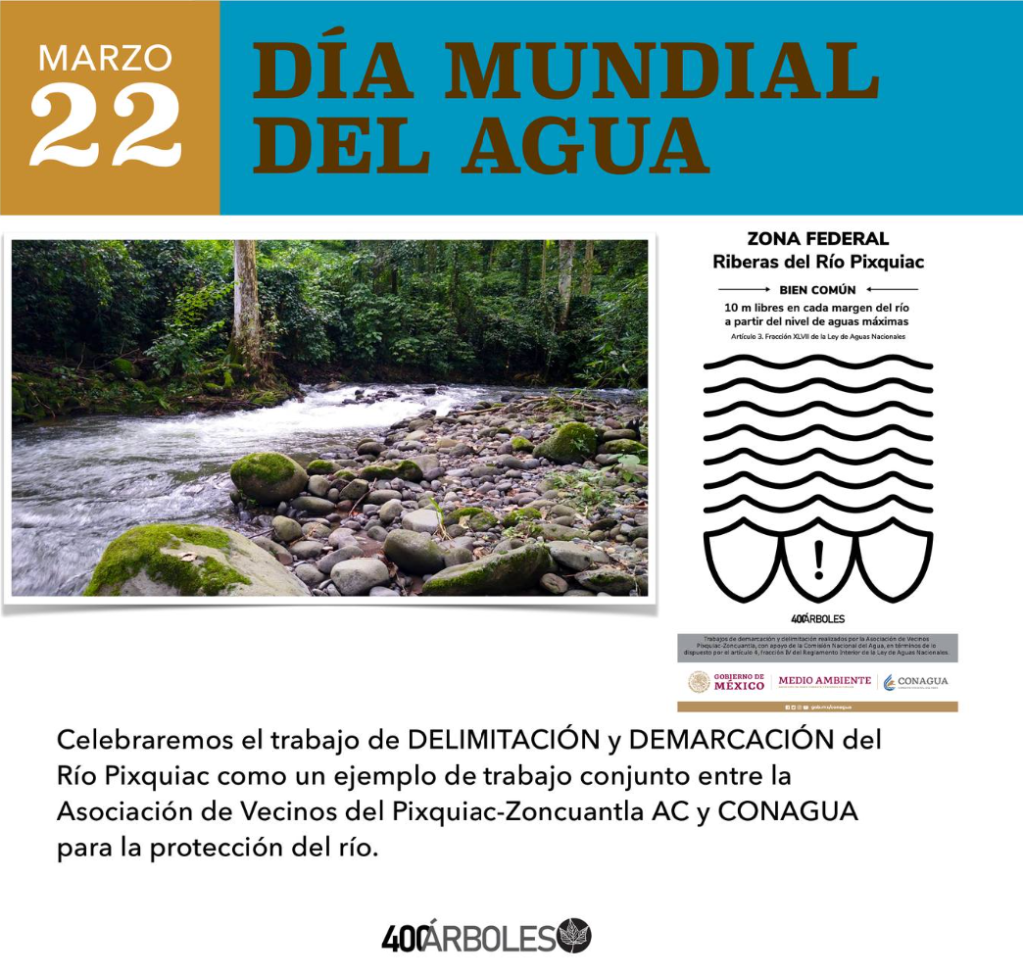
In our beloved state of Veracruz the first GWW water monitoring group that was established in Mexico, the Amigos del Pixquiac, is still quite active. They collaborate with the organization Vecinos del Pixquiac Zoncuantla and have been pursuing a bureaucratic procedure that has no precedent in Mexico. After almost six years of conversations, they finally are obtaining their Pixquiac River riparian zone officially delimited in collaboration with CONAGUA, the national water authority.
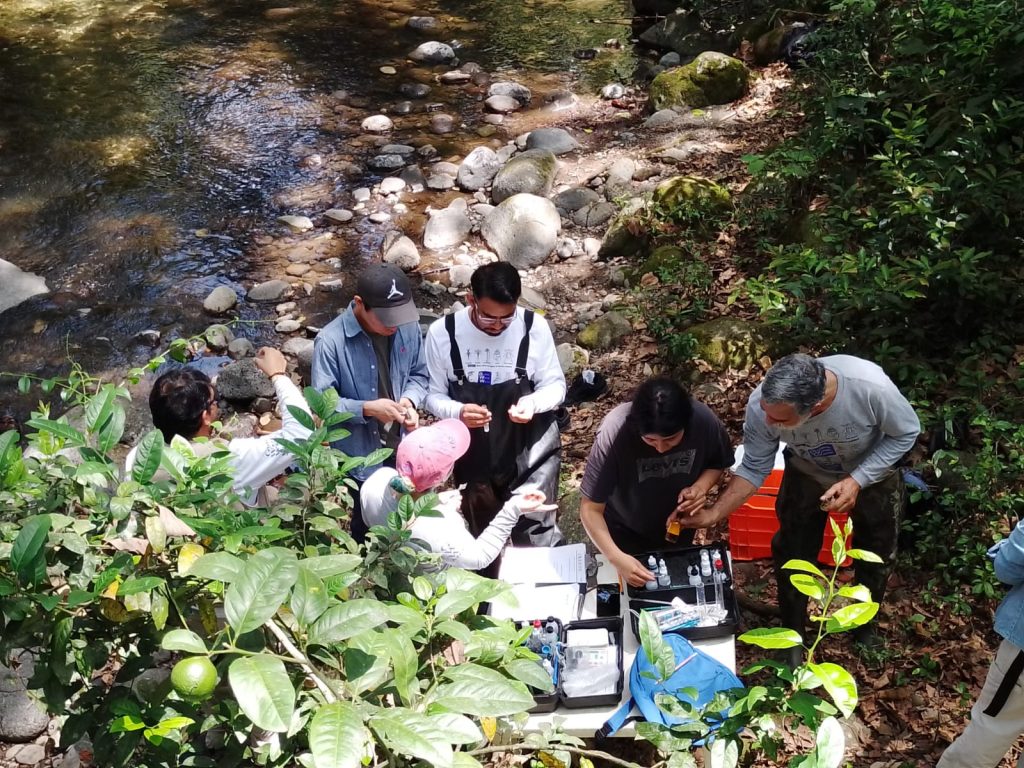
Something else is also happening about 700 km west of Veracruz, on the banks of the southern part of the Pátzcuaro Lake, in the city of Huecorio in the state of Michoacán. There, members of the group CECyTEM are presenting the results of their GWW community-based water monitoring to the Asamblea Purépecha. The Purépecha are one of the many ethnic groups in México, and they subsist greatly from fishing as they mainly live around the Pátzcuaro and Cuitzeo lakes.

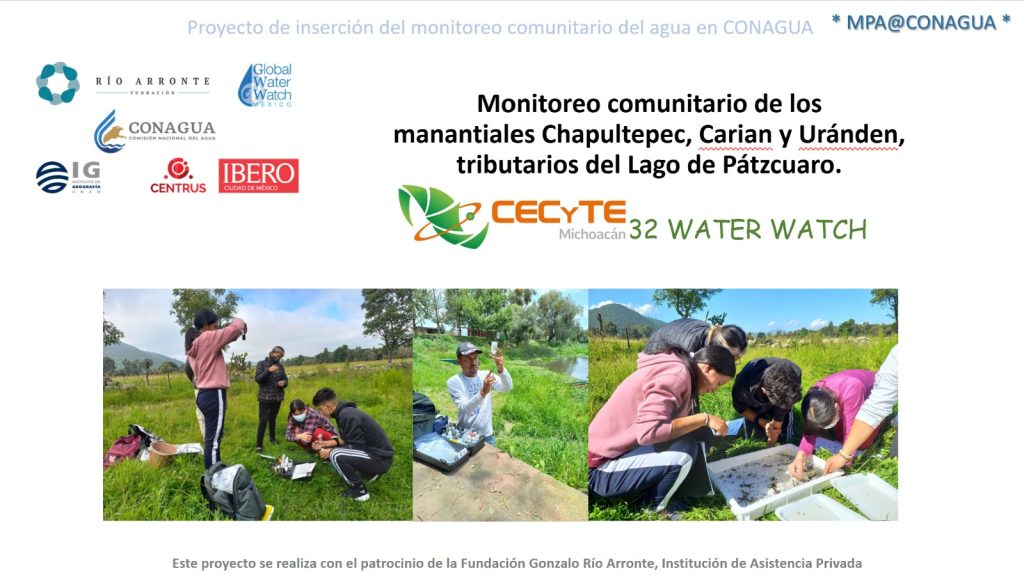
South of Mexico City, in the state of Morelos, GWW monitors in Cuautla are also presenting their results from water quality and biodiversity at the Fifth Festival of the Río Cuautla. This group actually found an endangered fish while conducting their water monitoring this month!
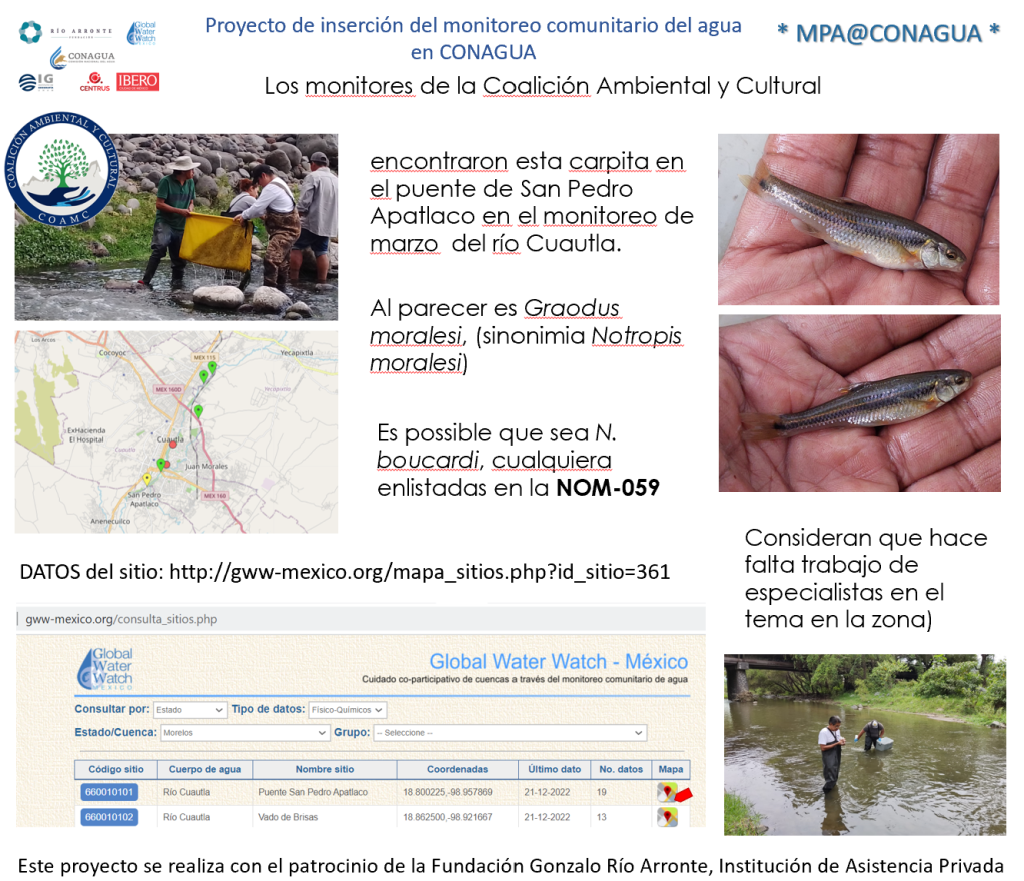
Getting back to our state of Veracruz, in the city of Naolinco, the GWW group is summarizing water-monitoring data gathered from 2007 to 2021 with the participation of the community. The community also collaborated in the mitigation of wastewater pollution with the construction of an artificial wetland to direct and treat their sewage instead of discharging it directly into the streams.

GWW Mexico collaboration and accomplishments go beyond Veracruz and all of Mexico. Conversations for more than a year with the Fundación Manzana Verde, a group in the Biobío region in Chile, led to a visit last year from them to Veracruz. During their visit, they learn from the GWW Mexican experience, meeting local monitors, observing and practicing water monitoring. After returning to Chile, a big Chilean group got certified as GWW water monitors in September 2022 and started monitoring. Recently we have heard that they are in conversations with the regional government to receive funding and have the opportunity to expand and consolidate the CBWM over there.
So, it has been a long journey, full of bumps, falls, lots of work and with a blurry road ahead sometimes. However, after 18 years, we can celebrate our accomplishments. The GWW Mexico database holds almost 14,000 water monitoring data records: 5,487 bacteriological records, 6,549 water chemistry records, 257 biomonitoring records, 868 stream flow records and 801 total suspended solids records. In addition, this World Water Day, we added a new feature in our water data webpage to reflect the energy of the people that want to get things moving related to water: a button to show data obtained by punctual sampling, not necessarily systematic monitoring, because we are in so much need of information that every drop counts!
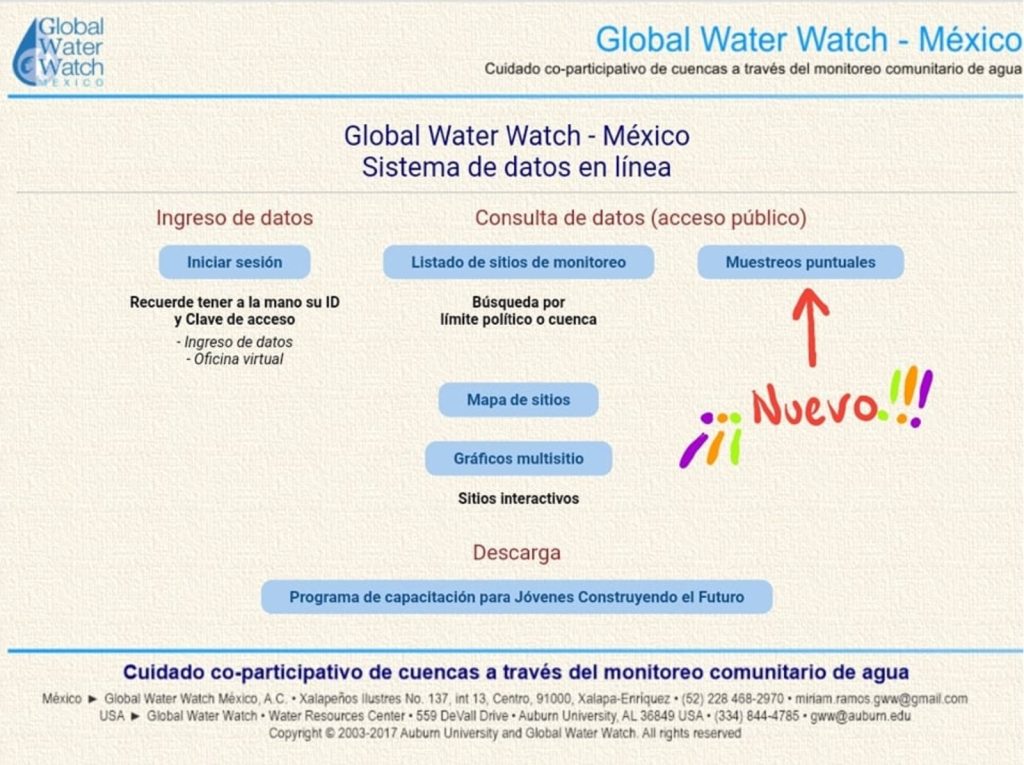
Visit us at http://gww-mexico.org/
HAPPY WORLD WATER DAY!!!

Excellent article about GWW Mexico journey with a lot of useful info. This helped me a lot. Thank you.